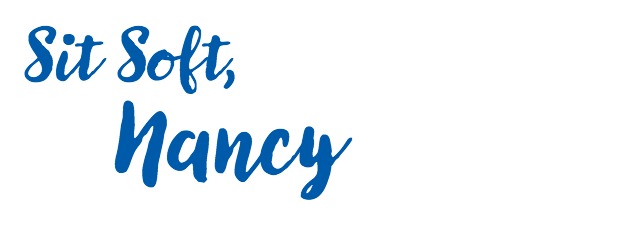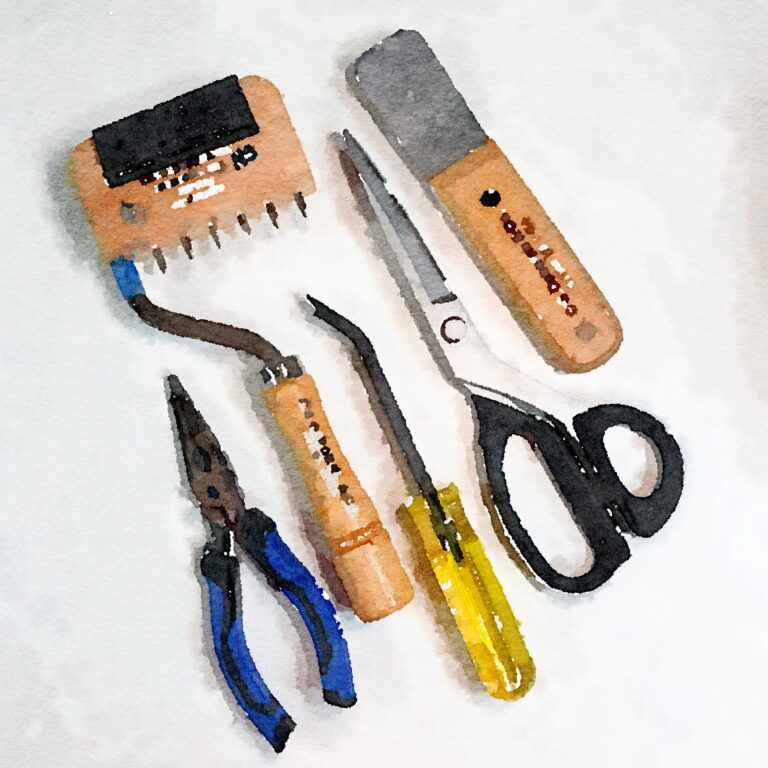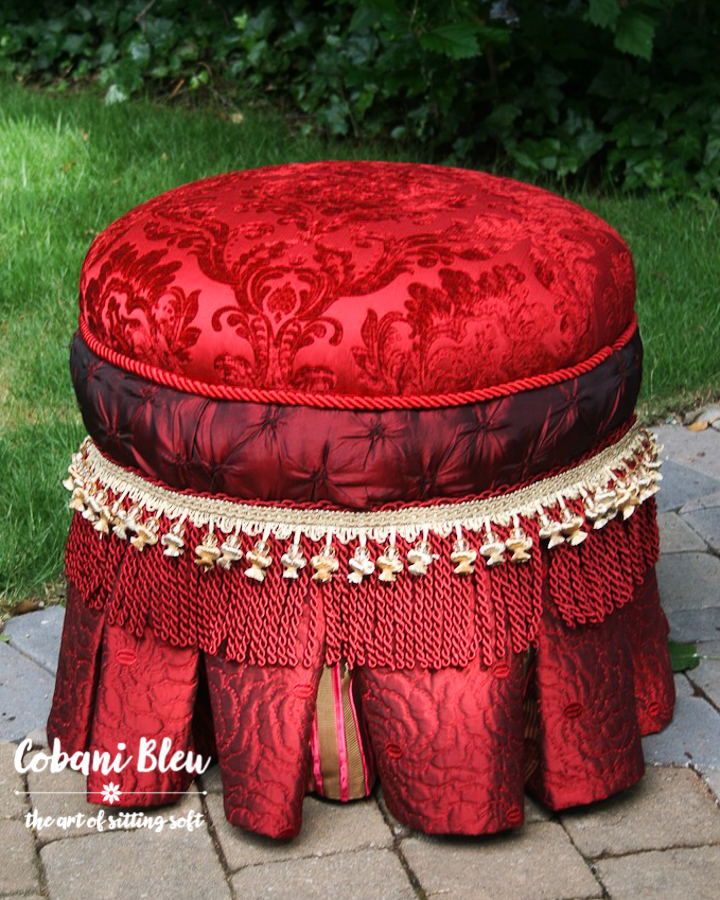Design Bleuprint: Anatomy of a Chair
Let’s talk about the anatomy of a chair.
In upholstery speak, knowing the anatony of a chair is useful when we start measuring a chair for fabric, laying out the fabric, cutting it, marking it and finally in applying it to the frame.


Most of the chair parts are pretty straight forward; inside back, inside arm, inside wing, outside back, etc. But let’s talk about a few items that may not be so familiar.
- Box Cushion – Most loose cushions on chair and couches are box cushions. These cushions have a top, bottom and a band connecting them creating a ‘box’ shape between the top and bottom.

- Decking – This is the fabric on the chair frame that sits underneath the cushion. Often it is not the same fabric as the chair is upholstered in, an easy way to save on fabric costs. Decking can be a little tricky to do. It requires precise measuring and fitting and good sewing skills. This chair is in the queue to be reupholstered. It has not been stripped yet, so please excuse the staining. The decking is often where manufacturers will add labels.

- Welt Cord – This is often called piping or trim. It is decorative in nature but serves the purpose of helping to shape the cushion or place it is being used. It may be single or double welt.
- Single welt is sewn between fabric layers, as in a cushion, or stapled to the frame of the chair between fabric or used to edge a piece of furniture.
- Double welt is used to cover staples where fabric meets wood frame.
In this picture, single welt cord is sewn into the top and bottom of the cushion. Double welt cord is used to cover where the fabric is stapled to the wood.

When considering the anatomy of a chair, not all chairs have all these parts, but this pretty much covers most scenarios. The other thing to know about chair anatomy is that especially in written form the parts are usually referred to by their initials. For example, inside back would be IB, outside arm would be OA, etc. When we get to the lessons on measuring for fabric, laying it out and cutting and marking pieces, you’ll see how knowing about the anatomy of a chair all comes together.
Next in the Design Bleuprint series will be a guide to stripping furniture, one of the more tedious and least liked parts of upholstery. Hopefully, I can make this task a little easier, if not down right fun!!








This was so informative! Totally interesting to me to learn all the names of the anatomy! Looking forward to the rest of the series!
Hey Julie! Thanks for stopping by and following along with this series!
I have a sweet little chair in my sewing room and I’ve always wanted to learn upholstery. I googled anatomy of a chair today and am excited to have found your site! Ive only read the article on chair anatomy, sitting soft and how you developed your name and im already feeling very hopeful that I can do this.
Julie Bell
Allen, Texas